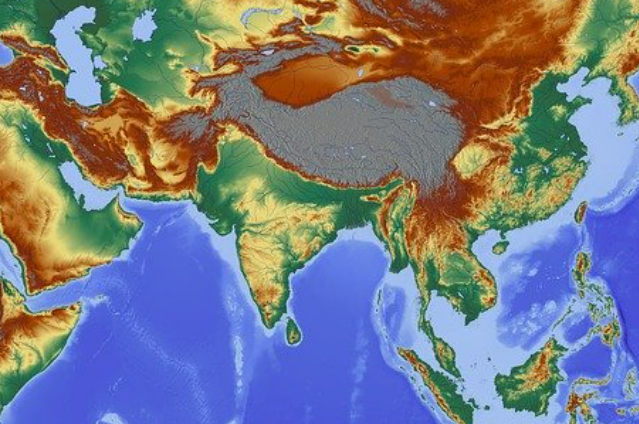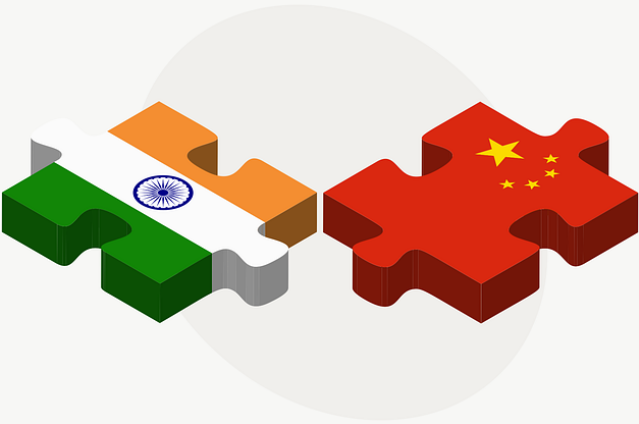“I take swore of this land,
I won’t let this country vanish,
I won’t let this country stop and;
I won’t let this country bow.”
- Prime Minister Shri Narendra Damodardas Modi.
These lines surely bring all of us a sense of euphoria in our nerves when we read them aloud with our Honourable Prime Minister Shri Narendra Modi. It encompasses his zeal to protect this nation from dwindling into oblivion even in the worst situations. Every Indian should have a mindset to contribute the same sense of vitality for India as it would prepare our country to stand upright in any situation, be it a war, a disaster, or a mishap; as goes the saying-“A country’s strength lies in the strength of its people.”
India, Our Motherland, has since ancient times been invaded by various foreign agencies. Starting from the Central Asian Aryans who entered India through the Khyber Pass, Alexander who crossed the Jhelum, to the Hunas, the Scythians, and the various travellers like Hsuan Tsang, Fa-Hsien, and I-sting; all these have cherished the beauty of our Subcontinent. Medieval India embarked on the invasion of Muslim rulers whose presence can still be experienced by the great architectural monuments built at that point in time, like the magnificent Taj Mahal, the Gol Gumbaz, and so on.
Modern India had its own history of heroism as well as hostility. The Britishers invaded India and subdued it like anything. But, their marvels stand today as pieces of honor for India, making way for it to remember and celebrate its bravery even in subjugation. The Lutyens Delhi, Hindu College, and many more signify how Britishers decorated India.
History explains to us why we were subdued by so many invaders and still are under the threat of subjugation by our neighbouring partners.
It is a serious issue to be analyzed so as to make India a paradise. These ramifications, if once rectified, can bring back the status of “Sone ki Chidiya” to our motherland.
Ranging over a territorial boundary of 4,057 km along the northern states of Himachal Pradesh, Uttarakhand, Sikkim, and Arunachal Pradesh, along with the union territory of Ladakh; India’s northern border is much afflicted by foreign interests. Its land partners China, Pakistan, Myanmar, Bhutan, and Bangladesh, surround it in all four directions and thus cause a rift in its territorial autonomy.

The northern boundary being a rough terrain, has got a tough deal to handle, and this further exposes it to be more attractive to its neighbours.
The Indian Government strives hard to nurture the villages and habitations in the remote areas of Northern India so that the folk of these areas is not deprived of any privileges that a normal person residing in the country’s capital or any well-facilitated area enjoys.
A similar situation is foreseen in the Indian Peninsula region, which is bounded by three water bodies that too cater to the easy invasions of foreigners just like it did for travelers in ancient times like Vasco Da Gama, Marco Polo, and many more.
Such case studies compel us to look into India’s current defense preparedness.
If we examine India’s defense structure very critically, two aspects pop up before us…First, the current status of the Indian international boundary, and second, the measures are taken by India to maintain its international borders.

When we ponder upon the first instance, we come across two major sets of prevailing tensions. The first one is the infamous India-China border issue along the LAC (Line of Actual Control) and the tussle between India-China maritime relations in the Indian Ocean Region, the second being the Indio-Pakistan border issue along the LOC (Line of Control).
LOC issue, or more precisely the POK (Pakistan Occupied Kashmir) issue, has since Independence, come on to a ‘no conclusion’ every time, and indeed has led to the loss of soldiers, civilians, and property during terror attacks and massacres. On the other hand, China plays its role from the North-eastern side, and till now, even after 15 rounds of talks on disengagement, no resolution has been identified, and the issue continues to get more and more tangled.
The development of China’s interest in the Indian Ocean Region after the establishment of groupings like The Quad (India, Australia, United States, and Japan), The AUKUS (Australia, United States, and the United Kingdom), and ASEAN has intrigued China to defend its sovereignty as a world power even in a location that does not belong to its official national territory.
Glancing over all these points, India’s presence of mind with respect to these locations can be evaluated through the measures taken by it to protect its boundaries. As goes the saying by Chanakya in the Arthashastra regarding foreign policy-
“When the right action is not taken at the right time, then time ensures the failure of action.”
- India has invested wisely in its indigenous defence technology under the Make-In-India mission to pamper up its defence infrastructure. The recent example of signing up of Rs 2971 crore deal by our Defence Ministry for the production of Astra Mk 1, a BVR Missile…reflects its commitment towards defense infrastructure upgradation.
- The concept of Theaterisation in the military introduced recently involves the integration of the Army, Air Force, and Navy for optimal resource utilization. This, indeed, will ensure the readiness of all three forces to stand up together without any lapse in times of national emergency.
- The Modi Government has invested a lot in buying defense equipment from our foreign friends, like the Rafale Jet planes from France, the Apache Helicopters and the S 400 Air defense system from Russia, and so on. This indeed has improved our International Relations too.
- The creation of the post of CDS (Chief of Defence Staff) in recent times has further improved the communication between the three military forces, which has indeed increased synchronization and compatibility between the Indian Army, the Indian Air Force, and the Indian Navy.
Thus, India stands in a good position to safeguard its territory from enemies. The major idea is to focus on the thought that-
“If there is no peace in the society, freedom cannot be secure, and development projects cannot be executed, progress cannot be made.”

Image by Gordon Johnson from Pixabay
Hence, it is very important to have a peaceful society as it ultimately leads to a peaceful nation.
